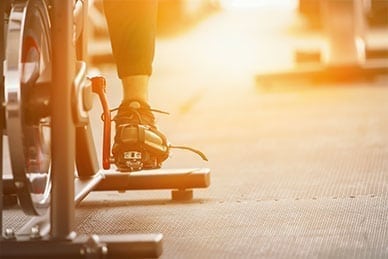Despite prior research findings to the contrary, new research has found that there may not be a negative correlation between cycling and sexual health in women. Here, we will touch on the origin of previous medical opinions suggesting that cycling precipitates potentially adverse impacts to a woman’s sexual health, examine new research that refutes those initial inclinations and offer tips concerned women cyclists can employ as measures of added precaution.
Cycling Affects Women’s Sexual Health: Initial Research Findings
There are certain health professionals who suggest that cycling could pose a threat to a woman’s sexual, urinary and reproductive health. Some members of the medical community opine that extended time spent sitting atop a bicycle seat might eventually produce issues like numbness and could cause more serious manifestations such as a decreased blood flow to a woman’s genital and reproductive regions.
However, in addition to the potentially extended duration seated in the same position, health experts also ascertained that a bicycle’s handlebar positioning played a significant role in impacting a woman’s sexual health. A study concluded that women who maneuvered their bike’s handlebars beneath the height of their seats experienced both an increased level of pain and diminished sensation in their pelvic areas.
That said, this occurrence seemed to be due to gravity more than any internal bodily issue. When a woman cycles using handlebars that are on a more proportionate height level with the craft’s seat, she has a tendency to push forward with greater frequency. Such action places greater physical stress on the mid-section and nether regions.
Initially, researchers thought the concurrence of these events could lead to a gradual loss of sensation and pain in key erogenous regions surrounding the pelvis and ultimately impact a woman’s ability to both perform sexually and enjoy the activity.
The Actuality of Cycling and Sexual Health in Women
In spite of these initial opinions, recently conducted research suggests that such theories are incorrect. In fact, some studies even suggest that cycling could actually benefit women’s sexual health. Cycling is believed to:
Improve Overall Health and Mood
A study performed by the organization Cycle to Work Day chronicled a group of women who had recently begun cycling. The research results suggested that cycling can actually improve overall health and mood. Two-thirds of the test subjects reported experiencing stronger relationships with their significant other and roughly 40 percent of said participants discovered they had more sexual energy and engaged in more pleasurable romantic encounters.
Stimulate Blood Flow
The increased level of exercise cyclists obtain is said to stimulate blood flow. Heightened circulation is critical to maintaining the strength and vitality of all bodily regions, especially the sexual and reproductive organs. The healthier a woman’s sexual regions are the greater are the chances she will desire sex.
Strengthen Stamina and Endurance
 Enjoyable and lasting sex requires that those who partake in the activity possess the stamina to engage in it. Considering that physical exertion like cycling precipitates increased strength and blood flow, it is not surprising that female cyclists may enjoy more frequent and longer-lasting trysts.
Enjoyable and lasting sex requires that those who partake in the activity possess the stamina to engage in it. Considering that physical exertion like cycling precipitates increased strength and blood flow, it is not surprising that female cyclists may enjoy more frequent and longer-lasting trysts.
Increase Secretion of Vital Bodily Hormones
Physical activities such as cycling can stimulate the body to release stress-reducing hormones. Women who experience less stress may possess a greater desire to engage in sex.
Tips Women Can Employ To Ensure Safe and Comfortable Cycling
Though many physicians and medical researchers seem to agree that cycling is not detrimental but is in fact potentially beneficial to women’s sexual health, those females who have any reservations about participating in the activity could employ certain added safeguards including:
Adjusting the Saddle
Women cyclists can ensure the saddle of their craft is centered. When the saddle is not centered, a rider might sit atop the seat awkwardly, which could lead said individual to compensate by pushing or pulling harder on the handlebars. As previously mentioned, such actions could result in placing excess body weight on the lower body and sexual regions.
Wear Appropriate Gear
The soreness that might develop as the result of sitting atop a bicycle seat for extended duration may be avoided or lessened by donning clothing designed specifically for cycling. Articles like biking shorts, which are fitted with extra padding, could provide an additional comfort level for female cyclists, particularly those who cycle competitively or over long distances.
Identify and Use the Most Appropriate Bike
It is important to identify and utilize the cycle that is most befitting of the woman in question’s exercise aims. If said individual is a competitive cyclist with lofty goals, purchasing a craft that is geared more towards competition or endurance could be easier to ride and less likely to elicit painful manifestations when used over the long-term.
Aligning the Handlebars
Just as seat fit is important, identifying and maintaining proper handlebar alignment can also be critical to preventing physical injury to a female cyclist’s nether regions. Riders should make sure they are able to grip said components without having too lean forward or back too far when in motion.


